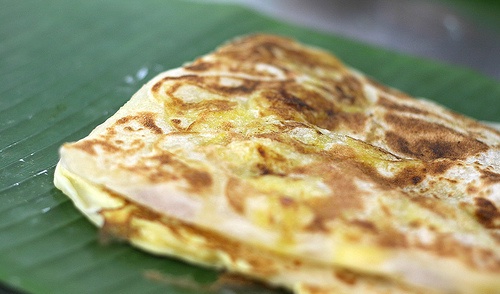Roti canai or roti prata, also known as roti chenai and roti cane, is an Indian flatbread dish found in several countries in Southeast Asia, especially in Brunei, Indonesia, Malaysia, Singapore and Thailand. It is usually served with dal or other types of curry, but can also be cooked in a range of sweet or savory variations made with a variety of ingredients such as meat, eggs, or cheese.
Introduced around the 19th century, roti canai has become a popular breakfast and snack dish especially in the Southeast Asian countries of Brunei, Indonesia, Malaysia, Singapore and Thailand, and is one of the most famous examples of South Indian cuisine in the region. It is said that the dish was brought by Indians during the era of British Malaya, the Dutch East Indies and the Straits Settlements. They are also colloquially known as "mamak", and are served in street mamak stalls located in both rural and urban Brunei, Indonesia, Malaysia and Thailand as well as within hawker centres in Singapore.
It has also been theorized that the dish had also been introduced much earlier in the 17th century in Aceh and North Sumatra by Indian traders under the name roti cane. In Indonesia, the dish is particularly found in Sumatra, where the Indian Indonesian community is more prominent compared to the rest of the country.
